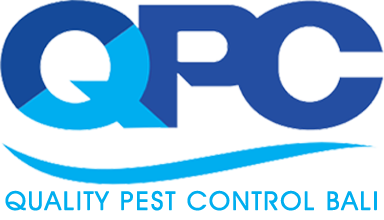Lung Hypertension WHO Groups: Recognizing the Category and Monitoring
Lung high blood pressure (PH) is a complex and also potentially dangerous problem defined by high blood pressure in the priapus precio arteries of the lungs. It affects individuals of all ages as well as can cause signs such as lack of breath, fatigue, as well as upper body pain. To better understand as well as handle this problem, the World Wellness Company (WHO) has actually identified PH into various teams based on their underlying reasons and also treatment approaches. Let’s discover these that groups as well as get insights right into their value for people as well as medical care experts.
Team 1: Lung Arterial Hypertension (PAH)
Lung arterial hypertension (PAH) is the most well-known and also thoroughly researched type of PH. It mostly impacts the tiny arteries in the lungs, triggering them to slim as well as end up being tight. This team includes a number of subtypes, such as idiopathic PAH (IPAH), heritable PAH (HPAH), as well as medicine- and hondrexil also toxin-induced PAH.
PAH can be caused by genetic aspects, specific medical conditions, or direct exposure to specific medications. It typically offers with symptoms like shortness of breath, exhaustion, breast pain, and palpitations. Early medical diagnosis and also treatment are vital to managing PAH properly as well as boosting clients’ quality of life.
Therapy options for PAH include medications that help expand the capillary, reduce inflammation, as well as enhance heart feature. In addition, way of living alterations such as normal exercise, preserving a healthy and balanced weight, and staying clear of cigarette smoking can additionally be beneficial.
- Idiopathic PAH (IPAH)
- Heritable PAH (HPAH)
- Medication- as well as toxin-induced PAH
These subtypes of PAH might have different underlying causes, but they all share the usual quality of boosted high blood pressure in the lung arteries.
Team 2: Pulmonary Hypertension Because Of Left Cardiovascular Disease
Pulmonary hypertension due to left heart problem (PH-LHD) happens when there is elevated stress in the pulmonary arteries as an outcome of left-sided heart problems. Problems such as cardiac arrest, valvular heart disease, and left ventricular dysfunction can result in PH-LHD.
In PH-LHD, the left side of the heart stops working to efficiently pump blood, triggering stress to build up in the lung arteries. This increased pressure places strain on the right side of the heart, leading to PH signs and symptoms. Treatment largely focuses on managing the underlying left heart condition and enhancing heart function.
Team 3: Pulmonary Hypertension Because Of Lung Diseases and/or Hypoxia
Pulmonary hypertension because of lung diseases and/or hypoxia (PH-LD/H) is defined by enhanced lung high blood pressure caused by chronic lung conditions or reduced oxygen levels in the blood. Conditions such as chronic obstructive lung disease (COPD), interstitial lung illness, and rest apnea contribute to the advancement of PH-LD/H.
In PH-LD/H, the underlying lung disease or hypoxia activates vascular adjustments in the lungs, bring about increased lung arterial pressure. To manage this problem, it is essential to resolve the underlying lung condition, maximize lung function, and also enhance oxygen degrees in the blood.
Team 4: Persistent Thromboembolic Pulmonary Hypertension (CTEPH)
Persistent thromboembolic pulmonary hypertension (CTEPH) is an one-of-a-kind kind of PH caused by blood clots in the lung arteries. These embolism, known as persistent thromboembolic disease, cause tightened and also blocked vessels, consequently enhancing lung artery stress.
CTEPH can bring about severe signs and substantially effect a client’s quality of life. Therapy alternatives for CTEPH might include medication, pulmonary endarterectomy (a surgery to remove embolism), and also, in some cases, lung hair transplant.
Team 5: Lung Hypertension with Unclear Multifactorial Mechanisms
Team 5 incorporates a diverse series of conditions that do not fit into the previous four teams however still present with lung high blood pressure. These conditions may include hematologic conditions, systemic disorders, metabolic disorders, and also others. The accurate systems behind lung high blood pressure in this group are usually unclear as well as call for more study.
In Conclusion
Understanding the different that teams of lung hypertension is important for accurate medical diagnosis and efficient administration of the problem. Each team has its unique underlying reasons as well as treatment approaches, stressing the significance of tailoring therapy strategies to specific people.
If you or a person you recognize experiences symptoms symptomatic of pulmonary hypertension, it is important to seek medical focus promptly. Early medical diagnosis as well as suitable therapy can significantly enhance outcomes and improve the quality of life for individuals dealing with this difficult condition.
